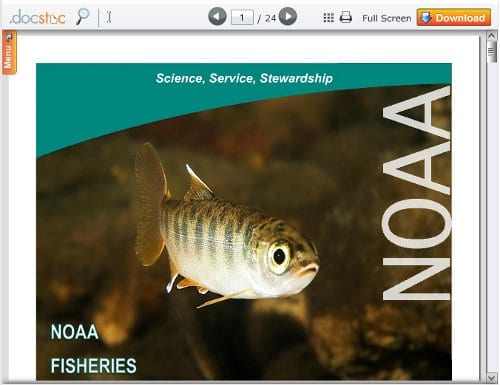Feds Detail Central Coast Coho Recovery Plan
California’s coho salmon are in dire trouble, especially along the central coast, where they’ve all but disappeared.
The NOAA plan is not only significant in scope, it’s also apparently extraordinarily detailed (from the Santa Cruz Sentinel):
Meeting in Scotts Valley, officials from the National Oceanic and Atmospheric Administration on Wednesday detailed a road map to restore the legendary fish to local streams, slipping from the mountains to the sea for millions years before all but disappearing during the post-WWII era. And with it came a warning that the time for action is short.
“The situation south of the Golden Gate is dire,” warned Jon Ambrose, a NOAA biologist with the National Marine Fisheries Service.
Once found in more than a dozen rivers between San Francisco and Aptos, Coho are now found in two: Scott Creek and San Vicente Creek. The population ran into the hundreds of thousands during the 1940s; it is now listed as an endangered species.
The highly detailed recovery plan includes scores of recommendations and a detailed analysis of specific rivers. It covers proposed legislative and regulatory changes, pollution control practices, road and sewer management, monitoring and much more.
It calls for specific activities, such as felling trees into rivers to bolster habitat, restoring estuaries, reducing nitrate discharges from stables and even working with the Santa Cruz Seaside Co. to come up with a way to keep litter from drifting from the Santa Cruz Beach Boardwalk into the San Lorenzo River.
The full 24-page executive summary is found at the bottom of the article, and it includes many of the habitat improvements (large woody debris, etc) championed by CalTrout in restoration projects (and legislation like the Coho “HELP” act).





